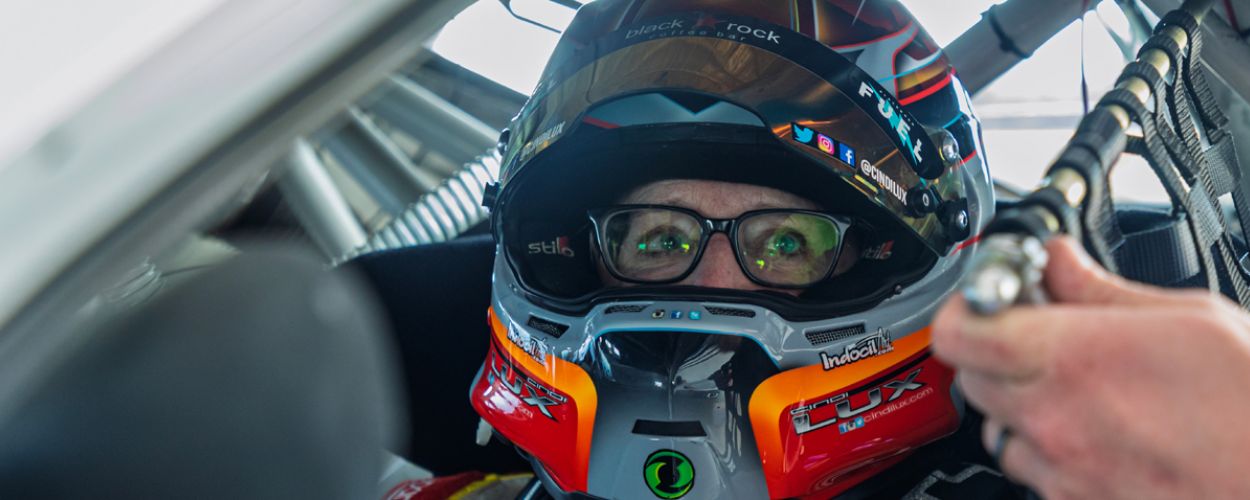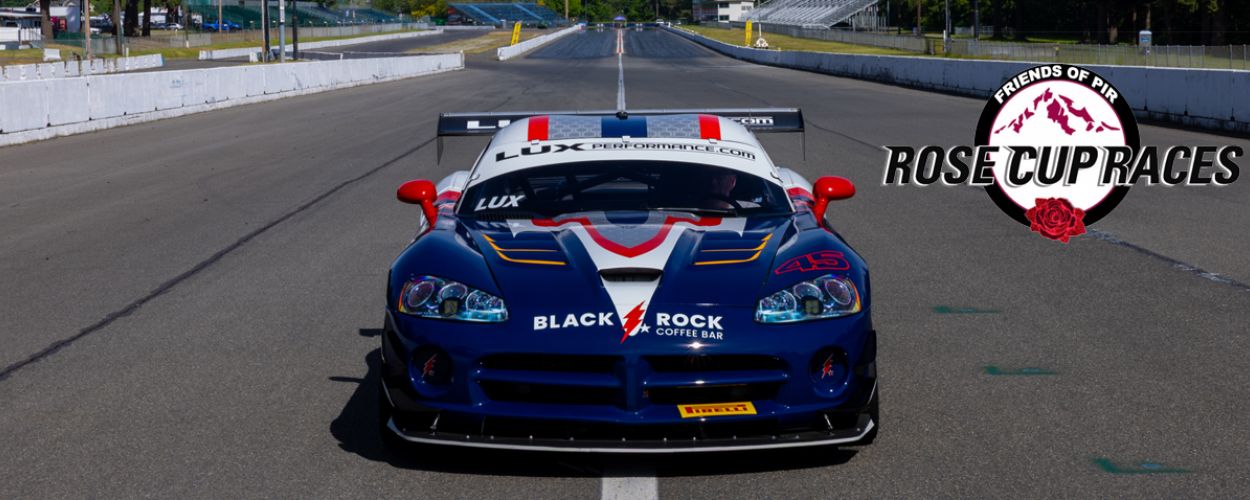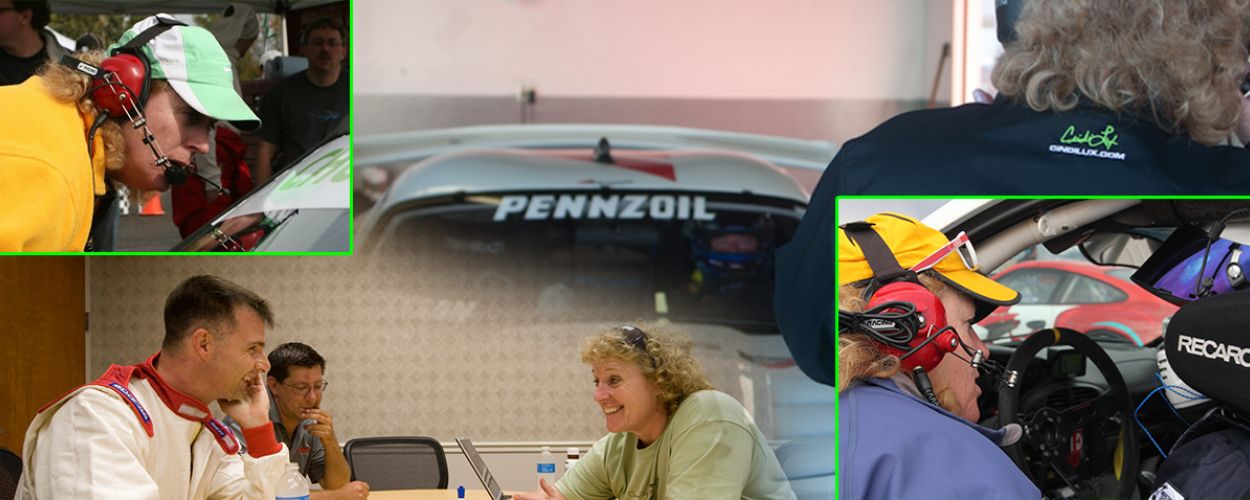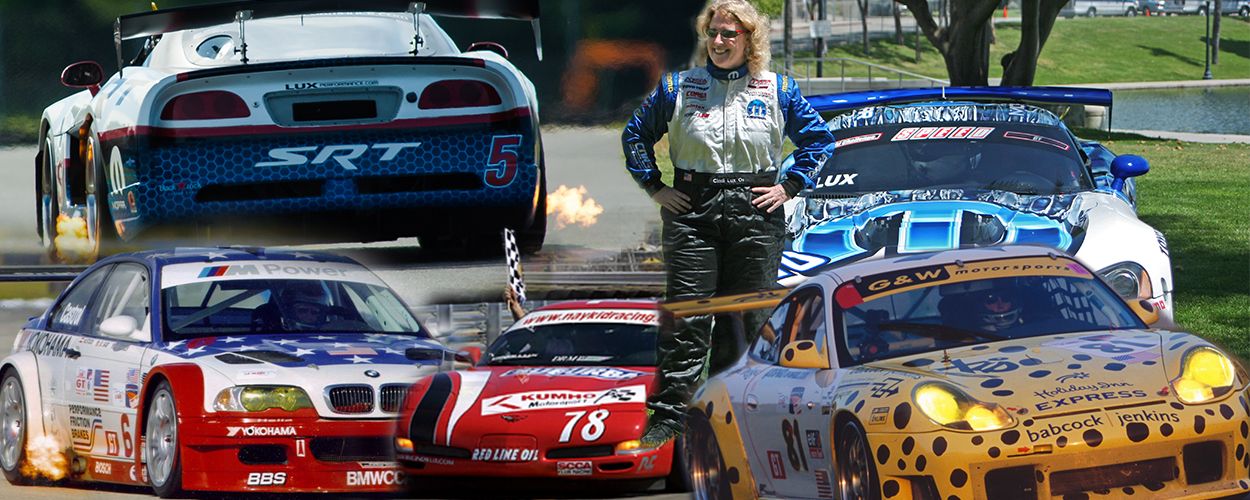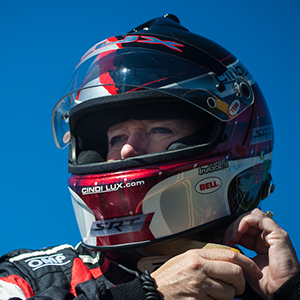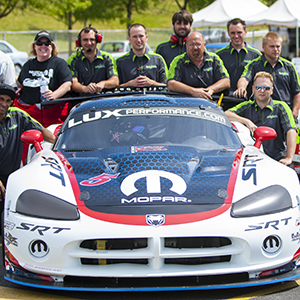[SpeedTV] Cindi Lux: The Art of Professional Driving and Instructing
[This article originally appeared on speedtv.com.]
{mosimage}In the first installment of a new series that takes a look into the world of professional driving instruction, we asked SPEED World Challenge GT and ALMS racer Cindi Lux, an instructor at the magnificent Miller Motorsports Park Ford Driving School, to tell us about her unique challenges an practices in her dual role as a pro racer and pro instructor.
With growing numbers of auto and racing fans flocking to their local race tracks to receive high performance driving and racing lessons, the one exclusive club most drivers and racers belonged to has become anything but rare -- almost everybody now knows someone that takes their car to the track for a weekend of fun and fast turns.
With Cindi's insights at hand, maybe a few of you will book lessons to join her at Miller in Utah to learn from one of the best.
~Marshall
There is an old saying, “if you can’t do it, then teach it”. You hear this lot in a variety of different sports when it comes to the world of teaching or coaching. Motorsports is no different.
I guess I am going to take an exception to that old saying… hopefully others will agree! But regardless, I haven’t hung up my helmet of professional driving just yet…but I do enjoy the art of teaching. Both at the entry level and also the advanced, private coaching I do on pro weekends at a variety of tracks.
The big question is: “what makes a good coach or teacher”? We can probably get into a long, drawn-out discussion on the theory of a good instructor. But I think it all boils down to having a passion that you want to share with others and being able to communicate this knowledge in different ways to different people. You must be able to explain things in so many different styles or methods because what may seem logical and clear cut to some, may not make any sense whatsoever to others. You have to really be able to communicate on different levels and have an arsenal of different examples to get your point across.
My day job is anything but normal today. However, in my past I have lived the life of the corporate world while working at Toyota Motor Sales USA in Torrance California for 10 years. I truly believe this company taught me much about work ethics and relationships. You have to have trust and respect in people you work with in order for a good product or service to be developed. That has helped me understand the unusual balance of teacher, business person and racer. No where does that balance come into play more than when teaching someone that you may be racing with later in your career… or even later that weekend!
I started teaching over 10 years ago at a variety of schools. These included: Panoz Racing School, Porsche Driving Experience, Fast Lane Racing School that trains the celebrities for the Long Beach Grand Prix, BMW Performance Center both in the US and also down in South America and a few others. But most recently I have been hanging my hat these days out in Salt Lake City at Miller Motorsports Park. By now most people have probably heard of this incredible race track but the school is a little less well known. That is too bad as the program at Miller is probably one of the best in the country. Granted we have some of the best equipment and one of the best tracks in the world but it all boils down to people. And the people who run and work at this school all have one thing in common….a passion to help people. And that is where the “balance” comes in.
{mosimage}In order to pass along the knowledge about the art of driving, you really have to have a good solid background in racing. Everytime I hit the track regardless of the type of track day (marquee club day, corporate hot laps, National race weekends, private testing for our NayKid Racing Dodge Viper Competition Coupe World Challenge program or anything else) I learn something that I can put in my “memory rolodex” for future opportunities to share this information with others.
I do get the question: “Is it tough to go from racer to instructor?” No, I have never had much problem with that. It is something that I have done for so long that I can jump back-and-forth pretty quickly and comfortably. No matter what level you are, you are always learning and teaching. I will talk to other drivers in my races about their lines and they will ask me about mine. It is just the nature of the sport. It goes beyond just having fresh, recent knowledge of the course, something that is REALLY important at a track as long and complex as Miller Motorsports Park for instance.
Being fortunate enough to be actively racing in the SPEED World Challenge GT Series gives me another area to gain knowledge for my clients. At times this year, I would get done with a World Challenge race, quickly change out of my drivers suit, run to the airport to catch a red eye flight so I can be ready to go at 8 am the next morning to teach at a racing school. At times I am a little tired but all that goes out the window when you see new students’ eyes filled with excitement on what lies ahead of them for the next two to three days. They are little “sponges” just waiting to be filled with knowledge. Between testing and competing on race weekends, it allows me to gain data that I can share with others when I do teach. While I know a large number of fantastic instructors who don’t currently race, I feel it gives me more depth and in some cases an advantage when it comes to sharing my knowledge.
The other question I get a lot is about my ego. How can I go from racing a Dodge Viper Competition Coupe in the World Challenge Series or in the American Le Mans Series GT2 class to teaching someone that can’t even drive a Dodge Caliber on the street without hitting a parked car? To me, it is important to leave the ego behind. Once I am at the track with my instructor hat on, I am an instructor. It isn’t about me; it is about getting the most out of the student. They are paying to learn and most really want to learn. That jazzes me up. How cool is that to be asked to help someone that genuinely wants to learn? Whether I won the June Sprints the day before or finished dead last because some wanker stuck me in the fence doesn’t matter. My job is to make sure that the person I am coaching is getting everything they can out of the experience… or they might be the wanker that puts me into the wall the next week.
{mosimage}One of the key things that I think I bring to coaching, because I am currently racing, is the psychological aspect of the sport. It is such a big part of the sport and it really does separate the pretenders from the contenders. I learned this first hand instructing the Long Beach Grand Prix celebrity drivers. Some are actors, singers and athletes in other sports. But, while they might have great reflexes and athletic talent to help with the physical requirements of racing, most miss the mental side of driving. They approach it as if it is their street car. When you try to instruct this part of the sport, they miss the point and want to jump right to “how fast did I go?”
I have had the pleasure over the past five years to have worked with a Sports Psychologist from the US Olympic Training Center. We met through a student of mine and Olympic skier Picabo Street. Now there is one competitive and driven person! Anyway, she helped me realize that regardless of the sport you are in, the mental side is so huge. You have to have confidence in your ability to perform at the best level you can. The biggest lesson I have learned over the years is not concentrate on the end result. Like “how fast did I go on that lap?” What we need to focus is perfecting “the process” on how we GET to the final result. So focusing on smooth braking, eyes up, good steering inputs, etc... Focusing on the “meat and potatoes” of driving….aka the basics will then in turn produce the end results you are trying to obtain.
I have taken this mental side of the game and incorporated this into my teaching. This goes for both the beginner and professional racers that I coach.
{mosimage}Watching body language is also key. Non-verbal communication makes up the majority of the way we get our point across. Seriously…there is so much information people give you without saying a word! When I get in a car with somebody, I immediately look at their body position; do they have the death grip on the wheel? Are their eyes darting inside the car around from all the adrenaline pumping in their body? How are they breathing or are they holding their breath as they go around corners? Or my personal favorite…when you speak with them, do they give you the quick head nod up and down indicating they understood what you are saying but when in fact, they aren’t not hearing a word of what is coming out of my mouth? These are all clues on how to read your students and then come up with a game plan that is going to be the best for them.
Racing renews my energy for teaching. Other sports might wear you out; you might not want to see another football from the Super Bowl to the start of training if you are a NFL quarterback. But, to me, and most racers I know, you can’t get enough of driving at the limit, coaxing the most out of yourself. When I get to the track as an instructor, I carry that with me. I want to be on track and I want to get the most out of whoever I am working with. A win shows you got the most out of yourself in a race. A student that gets smoother, quicker and smiles bigger at the end of the school is how you measure your success as an instructor. That drives me. I want them to enjoy themselves but, you also never know when they might be racing you and you want to make sure, for your own safety, they know what they are doing.
So throughout the year, I wear many hats myself. They include being the race car driver, the instructor at racing schools and at times, the student myself. Driving a race car at speed is truly an art that requires a lot of dedication. Being a coach to new and experienced race car drivers is something I take very seriously.
To be able to communicate a driving technique to somebody and watch them execute it flawlessly is magical. One of the best AND worst days of my coaching career was when I was beaten by one of my students.
At this point, my job was done!
